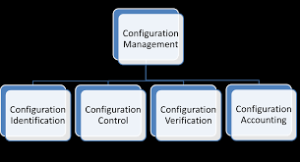TAG Blog
What is Configuration Management?

Configuration management (CM) is the detailed recording and updating of information that describes an enterprise’s hardware and software. Such information typically includes the versions and updates that have been applied to installed software packages and the locations and network addresses of hardware devices. Special configuration management software can help with the process. When a system needs a hardware or software upgrade, a computer technician can access the configuration management program and database to see what is currently installed. The technician can then make a more informed decision about the upgrade needed. An advantage of using a configuration management application is that the entire collection of systems can be reviewed to make sure any changes made to one system do not adversely affect any of the other systems. In software development, configuration management is called Unified Configuration Management (UCM). Using UCM software, developers can keep track of the source code, documentation, problems, changes requested and changes made.
Configuration Management (ITSM) is an Information Technology Infrastructure Library (ITIL) version 2 and an IT Service Management (ITSM) process that tracks all of the individual Configuration Items (CI) in an IT system which may be as simple as a single server, or as complex as the entire IT department. In large organizations a configuration manager may be appointed to oversee and manage the CM process. In ITIL version 3, this process has been renamed as Service Asset and Configuration Management. –Wikipedia
Why should organizations have Configuration Management teams, processes and tools? It is sometimes referred to as IT automation. Being able to access an accurate historical record of system state is very useful – not only for project management and audit purposes, but for development activities such as debugging (for example, knowing what has changed between one set of tests and the next to help identify what could possibly be causing a fault). Don’t pay the price later! Use configuration management to focus on fire prevention, not fire fighting. Good Configuration Management Resources
|

